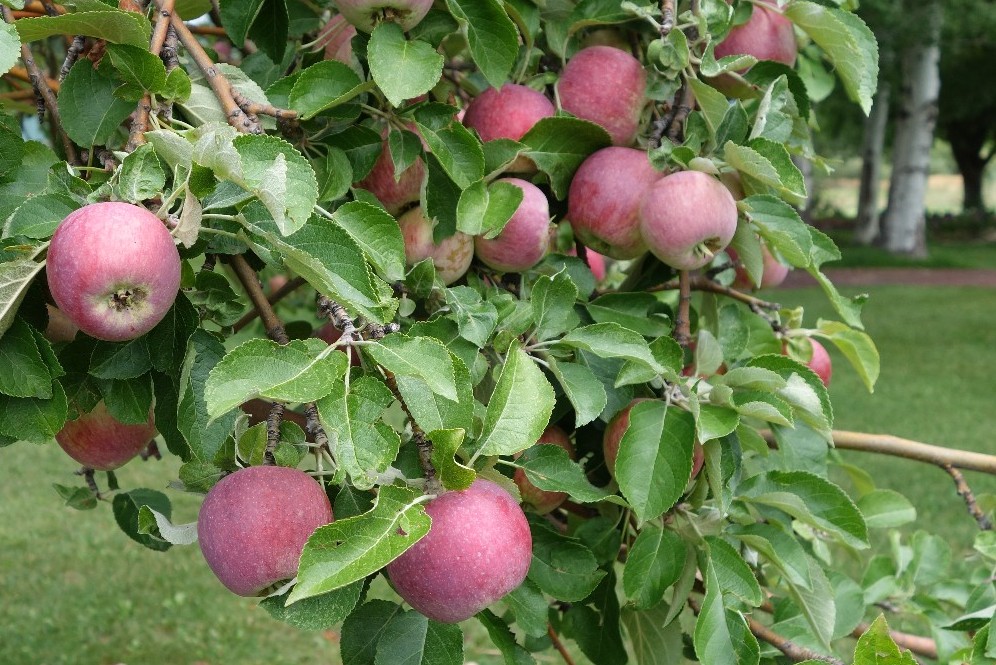A backyard orchard can be a most rewarding and fun gardening project and may be easier than you think and Fall is the perfect time to start. Since the ground is still warm from the summer sun, trees planted now will root in easily before cold weather arrives, and since the temperatures have cooled, there is less transplant shock.
When planning a backyard orchard consider the space you have available. Though you will need a fair amount of space, you won’t need as much as with older, larger varieties of fruit trees. Most varieties of fruit trees which are sold commercially in the nursery now are “semi-dwarf” which means they stay smaller than the large, sprawling trees of many years ago. Take the time to read the labels on the trees you select because even though the tag may say semi-dwarf this does not necessarily mean that the tree will be small. Most semi-dwarf trees still fall into the 15′-18′ range and need to be spaced 20′-25′ apart for best growing conditions and optimum fruit production.
Be sure the tree you select is appropriate for your zone. Some varieties don’t tolerate cold conditions very well and cherries are a good example. For instance, if you live in a warm area then sweet cherries should do fine. If you are in a cold area, then pie cherries are a better choice and you will have greater success. The easiest fruits to grow in a home orchard are apples of any variety.
Many of today’s varieties are self-fertile which means you may only need one tree. Others need a pollinator so you should purchase them in pairs and preferably select two different kinds. What if your neighbor has an apple tree- do you really need two then? The overall rule of thumb is yes- the closer they are, the better chance of pollination they will have, especially when they are small. To be the most successful, when choosing your varieties, try to pick trees which will bloom at approximately the same time.
Insects and diseases, although minimal, are attracted to fruit just as we are, and some varieties take more attention than others. In apple trees, coddling moths and bees are the primary culprits. Treat with winter dormant spray and continue to apply through the season as needed. Bees like to sting the fruit and eat it, or sometimes they will merely blemish the fruit as it develops, but this does not have to become a major deterrent to your orchard’s production. An orchard can be labor intensive if you are aiming for perfect fruit to put in your kitchen, but if your goal is fruit for pies, jams, and other culinary uses, it does not have to be such a chore to keep the orchard under control. Just be vigilant for insects such as aphids or powdery mildew and treat them as soon as they appear.
Watering, especially winter watering, in our area is a must. The roots of most fruit trees will spread wide looking for water so in order to get these roots well established, so watering, particularly during the first year, must be done on a regular basis. Fruit trees can be sensitive to over or under watering, especially the stone fruits like peaches, cherries, and apricots. Plants are like people- they don’t like wet feet!
If you’re hungry this year, then plant a tree. The sweet, juicy tastes of summer and fall will more than make up for the care that is involved. After all, what’s better on a cold autumn evening than apple pie, warm from the oven? And don’t forget the ice cream!

